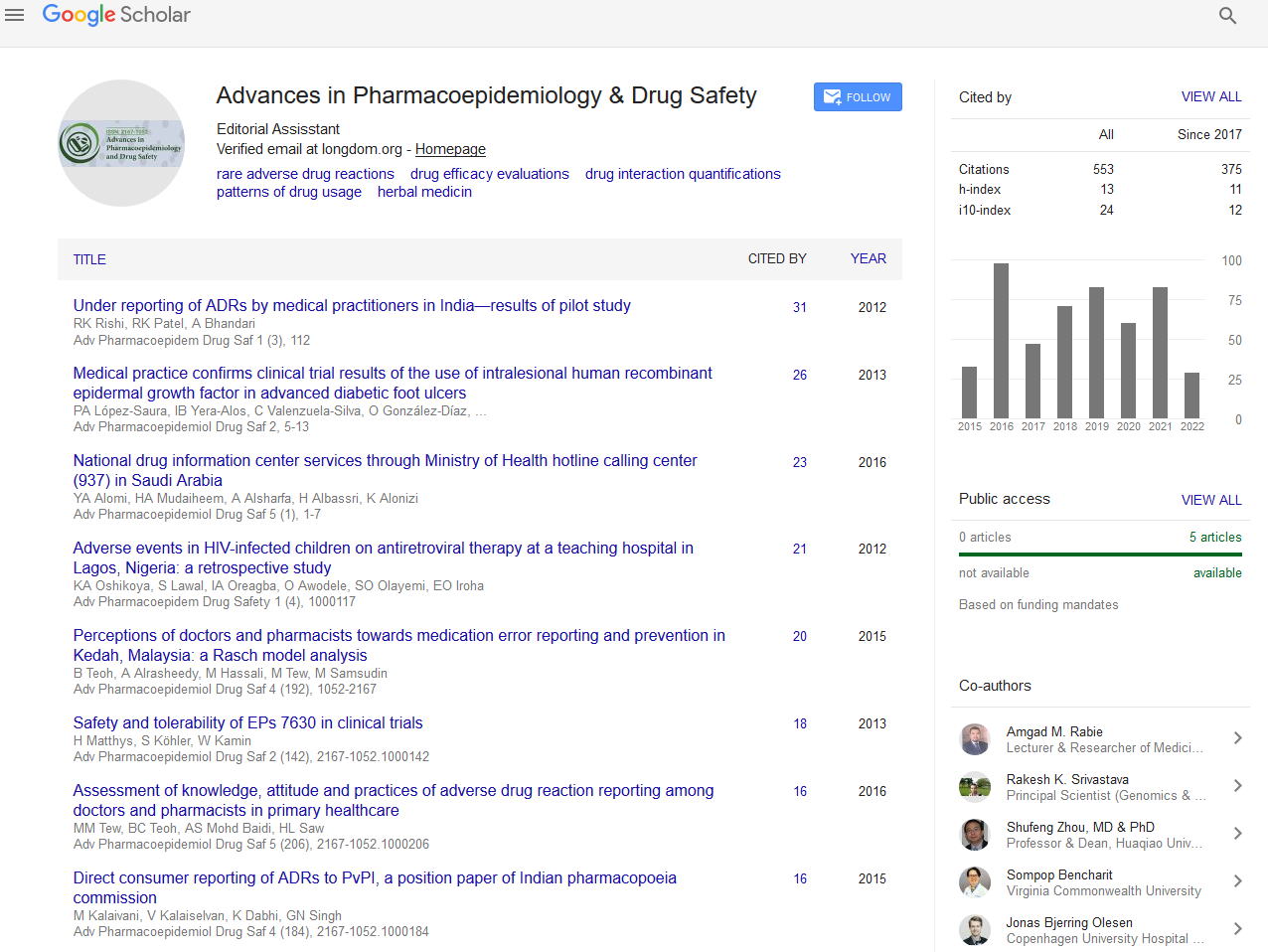Indexed In
- Open J Gate
- Genamics JournalSeek
- Academic Keys
- JournalTOCs
- RefSeek
- Hamdard University
- EBSCO A-Z
- SWB online catalog
- Publons
- Geneva Foundation for Medical Education and Research
- Euro Pub
- Google Scholar
Useful Links
Share This Page
Journal Flyer

Open Access Journals
- Agri and Aquaculture
- Biochemistry
- Bioinformatics & Systems Biology
- Business & Management
- Chemistry
- Clinical Sciences
- Engineering
- Food & Nutrition
- General Science
- Genetics & Molecular Biology
- Immunology & Microbiology
- Medical Sciences
- Neuroscience & Psychology
- Nursing & Health Care
- Pharmaceutical Sciences
Abstract
A Pharmacovigilance Study Using Tracer Techniques
Yerramilli A, Veerla S, Chintala E, Guduguntla M, Velivelli P, Sharma S and Paul R
Objective: To identify adverse drug reactions by using a comprehensive trigger tool method. To categorize the identified adverse drug reactions based upon their Probability, Severity, Harm and Preventability by using different scales.
Methods: A single-center, Cross-sectional, observational study based on medication and laboratory trigger tool methodology was conducted over a period of six months. The World Health Organization definition of adverse drug reactions was adopted. A list of 17 triggers were used to trace the adverse drug reactions which were then analyzed to assess the causality by using Naranjo’s scale, severity by Hartwig and Siegel scale, and harm by the National Coordinating Council for Medication Error Reporting and Preventing Index and preventability by Modified Schumock and Thornton scale.
Results: A total of 100 suspected ADRs were collected and analyzed. The drug classes most commonly implicated with ADRs were cephalosporins (25%) followed by anti-diabetic agents (19%). According to Naranjo’s scale, the reactions were categorized as probable (80%), possible (10%) and definite (5%). According to the modified Schumock and Thornton preventability scale, 20 cases (20%) were possibly preventable while 80 cases (80%) were not preventable. In 85 cases (85%) the suspected drug was withdrawn while in 10 cases (10%) no change in dose was made and in 5 cases (5%) the dose was altered.
Conclusion: Pharmacovigilance using tracer techniques significantly increases the identification and reporting of ADRs. The tracer technique is relatively simple, sensitive, less expensive and largely effective compared to traditional methods. The Trigger tool provides an additional instrument in improving patient safety. This technique leads to an increase in awareness and reporting of ADRs and provide opportunities for the health care system to review drug selection and prescribing practices affecting patient outcomes.


